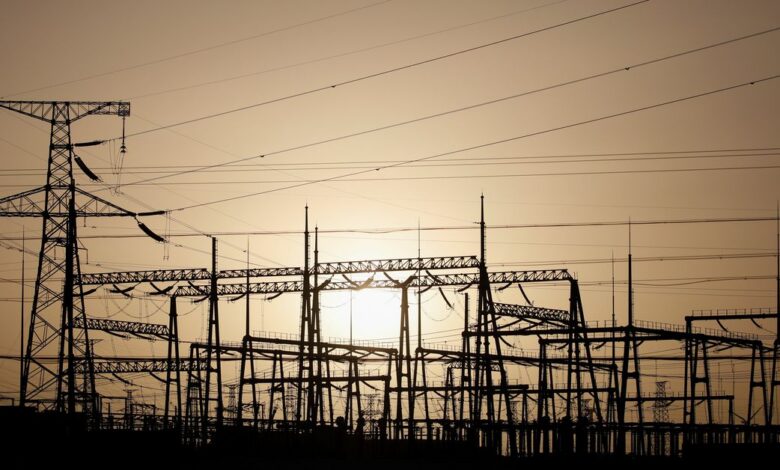China’s power crunch dwarfs Evergrande’s troubles in investors’ eyes

Electrical energy pylons and energy strains are pictured at an influence station close to Yumen, Gansu province, China September 25, 2020. REUTERS/Carlos Garcia Rawlins
SHANGHAI, Sept 28 (Reuters) – China’s , that has shut factories throughout the nation, might pose a a lot greater menace to the financial system than the debt disaster at Evergrande Group , prompting buyers to shun industries susceptible to energy shortages similar to steelmaking and building.
China is going through a , harder emissions requirements and powerful demand from producers and business which have triggered widespread curbs on utilization. Factories have stopped operations resulting from energy shortages and authorities mandates to fulfill vitality and carbon discount targets.
Goldman Sachs and Nomura have revised down projections for Chinese language financial development this yr in consequence. Shares in Chinese language chemical producers, carmakers and transport corporations have tumbled, whereas renewable vitality shares have soared.
Traders imagine the may dwarf the any fallout from liquidity troubles at property developer Evergrande, with liabilities of $305 billion, that roiled property shares and bonds this month.
“The Evergrande disaster has been unfolding for fairly a while, and I believe the dangers shall be defused in a focused approach,” stated Yuan Yuwei, hedge fund supervisor at Water Knowledge Asset Administration.
He stated the electrical energy outages would break the supply-demand equilibrium, dealing a direct blow to consumption and the true financial system. “The fallout is extra prone to be uncontrolled,” Yuan stated.
Yuan’s present funding stance is to wager on hydropower corporations similar to SDIC Energy Holdings and Sichuan Chuantou Vitality Co , whereas shorting steelmakers and coal-fired energy makers.
OVER-REACTION
In distinction, some property shares, hit laborious by the Evergrande disaster, have began to bounce again, as some buyers wager the market has over-reacted.
“We’ve been underweight in builders, however have been step by step been shopping for into this weak spot,” stated Rob Mumford, Hong Kong-based funding supervisor at GAM Investments.
“There are clearly distressed valuations for corporations that aren’t in misery at present.”
An index of Hong Kong-listed mainland China property shares , added 6.4% on Tuesday, after hitting its lowest degree in over 4 years final week, whereas an index of Shanghai listed actual property shares additionally gained 3% on Tuesday.
The rally got here after China’s central financial institution vowed to guard customers uncovered to the housing market, with out mentioning Evergrande in an announcement posted to its web site on Monday, and injected additional cash into the banking system.
NO POWER REBOUND
Nonetheless, to this point a minimum of, few buyers have been tempted to go bargain-hunting amongst corporations hit by the ability scarcity, fearing the scenario may deteriorate additional
An index monitoring non-ferrous steel makers, similar to copper and aluminium corporations , is down 15% this month. Shares in China’s largest steelmakers have plunged – for instance, Baoshan Iron & Metal Co and Angang Metal are each down over 20% since their mid September current highs.
The issues are widespread.
Twenty provinces have applied energy cuts since mid-August, together with the manufacturing hubs of Guangdong, Zhejiang and Jiangsu, placing stress on corporations’ earnings.
Manufacturing of metal, aluminium and cement, in addition to infrastructure building, can be instantly affected by the ability cuts and provide restrictions, Morgan Stanley analysts wrote in a report revealed on Monday, including the impression may ripple downstream to hit extra sectors similar to transport and cars.
Yang Tingwu, vice basic supervisor of hedge fund home Tongheng Funding stated he now prefers corporations with few factories, as China’s curbs on vitality and carbon emissions “is unhealthy information for the general financial system within the close to time period.”
Reporting by Samuel Shen and Alun John; Enhancing by Sumeet Chatterjee and Jane Merriman
:





